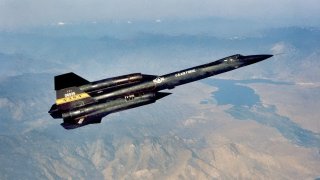YF-12: The SR-71 Look Alike That Could Have Changed Aviation History
While the SR-71 Blackbird would ultimately surpass its predecessor’s altitude and speed records, the YF-12 would retain its status as the heftiest, largest, and quickest manned interceptor to ever fly the skies.
Summary: The SR-71 Blackbird is renowned as the fastest aircraft ever, but its lesser-known predecessor, the YF-12, also holds a significant place in aviation history. Developed by Lockheed Martin's Skunk Works, the YF-12 was an experimental interceptor derived from the A-12 reconnaissance aircraft.
-Featuring dual cockpits, advanced navigation and firing computers, and equipped with air-to-air missiles, the YF-12 was designed during the Cold War to replace the F-106 Delta Dart.
-Despite its impressive capabilities, the program was discontinued in the late 1960s due to budget constraints and shifting military priorities. Today, one of the YF-12 prototypes is preserved at the National Museum of the U.S. Air Force, serving as a testament to its historical significance and technological innovations.
The YF-12 Interceptor: Lockheed's Legendary High-Speed Aircraft
The SR-71 Blackbird reconnaissance plane remains one of the most revered platforms in aviation history. This Cold War-era American jet still holds the record as the world’s fastest aircraft, beating far more modern jets like the F-22 Raptor and F-35 Lightning II. While the Blackbird name is easily recognizable, its predecessor is less well-known.
Introducing the YF-12 Fighter
After the Second World War, the U.S. Air Force wanted a replacement for its F-106 Delta Dart interceptor. The resulting North American XF-108 Rapier was conceptualized but soon nixed. Around this time, Lockheed Martin’s famed Skunk Works division was working to develop the A-12 reconnaissance aircraft for the Central Intelligence Agency.
The A-12 developed under the Oxcart program as a successor to the U-2 spy plane. Capable of reaching a top speed of Mach 3.29 and an altitude of 90,000 feet, the A-12 was extremely valuable in collecting critical intelligence for the CIA. From the A-12, Lockheed built three prototypes for testing. The unique airframe took its maiden flight in 1963, and early testing took place in secret throughout the next year.
The head of Skunk Works offered to build a modified variant of the A-12 for the Air Force.
Key Differences Between the Blackbird and YF-12
Perhaps the biggest difference between the YF-12 variant and its A-12 sibling sat at the front of the aircraft, where a second cockpit was installed for a Hughes AN/ASG-18 fire control officer tasked with managing the platform’s air-to-air arsenal. A digital computer for navigation and firing was complemented by a second computer installed for steering, which was considered quite advanced at the time.
Three of the four bays in the YF-12 initially designed to feature reconnaissance equipment were modified to house an internal payload of three Hughes AIM-147 Falcon air-to-air missiles. Two Pratt & Whitney J58 engines with 32,000 pounds of thrust each powered the YF-12, giving the aircraft a range of more than 2,000 miles.
Where Are the YF-12 Prototypes Today?
Despite the YF-12’s capabilities, the program was eventually cut short in the late 1960s due to budgetary constraints and the ongoing war in Southeast Asia. The prototypes, however, lived on in NASA’s facilities, where they were used for flight research into aerodynamics, propulsion, structures, noise tests, and controls.
While the SR-71 Blackbird would ultimately surpass its predecessor’s altitude and speed records, the YF-12 would retain its status as the heftiest, largest, and quickest manned interceptor to ever fly the skies.

Today, just one YF-12 prototype remains open for viewing by the public at the Research and Development Gallery at the National Museum of the U.S. Air Force.
About the Author: Maya Carlin
Maya Carlin, National Security Writer with The National Interest, is an analyst with the Center for Security Policy and a former Anna Sobol Levy Fellow at IDC Herzliya in Israel. She has by-lines in many publications, including The National Interest, Jerusalem Post, and Times of Israel. You can follow her on Twitter: @MayaCarlin.


